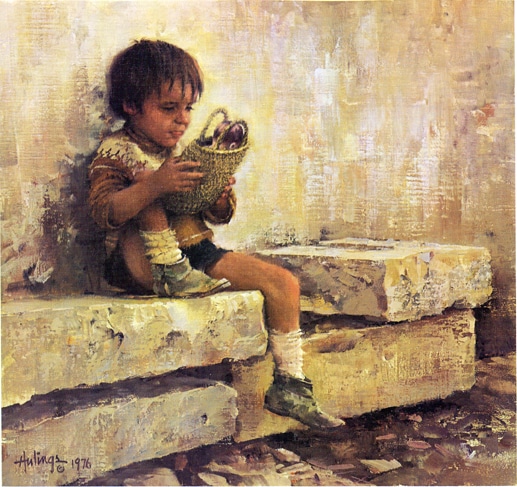Pi Luna is a Santa Fe-based financial coach who teaches workshops for creative business owners, and works with artists to figure out the most effective pricing strategies to build their businesses. Here, she shares the factors artists should consider when pricing their work.
 You know the feeling: You just poured your heart and soul into your piece of art. You put so much effort into making it perfect! Then you chose prices that felt good to you, but now your art just sits there, unappreciated and unsold.
You know the feeling: You just poured your heart and soul into your piece of art. You put so much effort into making it perfect! Then you chose prices that felt good to you, but now your art just sits there, unappreciated and unsold.
Your closet overflows with your unsold artwork. It consumes space and leaves you feeling stuck and like a failure. Against the advice of friends and colleagues, you drop your prices to absurdly low levels. And it works: You’re able to sell many pieces. It feels good to get your art out into the world, but the money you receive is too scant to cover your costs and time.
Here are the proverbial issues when art pricing goes awry: If you price too high, your work won’t sell; if you price too low, you lose money and feel unsatisfied. So where is the middle ground? It’s that sweet spot where people buy and appreciate your work, and you’re making a profit.
Here are five important points to consider in setting your prices:
1. Your Costs
Making art costs money. It requires materials, space, and time. Always keep track of your costs by saving receipts, making a list of expenses and/or using a spreadsheet. When you price your artwork, make sure to not merely cover your costs but to pay yourself for your time, effort, and skill.
2. Your Break-even Point
Once you know your costs, you can figure your break-even point. This is the number of pieces of artwork you need to sell in order to cover your costs. You won’t make a profit by selling that number of pieces, but at least you won’t lose money. If you end up with an unrealistic number and don’t think you can sell that many pieces, either find ways to reduce your costs or increase your prices.
3. Your Audience
The next step is to consider your audience. People have different reasons for buying art. Some people want to decorate their homes or feel a personal connection to your work. Others buy art to show off to their friends. Some may use it as conversation pieces. Others purchase art as investments. If they think you have potential success, they may buy your work in hopes of reselling it later for a profit. Each of these types of people respond to pricing very differently. So ask yourself: “Who buys my art?” “Why do they?” “What are they willing to pay for it?” “Are they my right audience?” “Is there a better or more lucrative audience for me?”
4. Your Location
The venues where you sell your work are closely linked to your audience and affect your pricing. Where are you currently showing your work? Who goes there? Do they represent your ideal audience? What are they willing to pay in that location? Is there a better venue for your work? If you’re showing at a high-end gallery, the clientele may anticipate and be willing and able to spend tens of thousands of dollars. You need to price your work in accordance with other artwork sold there or run the risk of seeming amateur if your prices are set too low. On the other hand, if you have a table at a flea market, the patrons will be expecting rock-bottom bargains. In order to do well, you would have to price accordingly.
5. Your Competition
The final factor to consider is your competition. What are other artists in the area charging for their work? Are they selling at their asking prices? If so, how many pieces are they selling? By studying your competition, you begin to get a sense of what pricing strategies work and which don’t.







